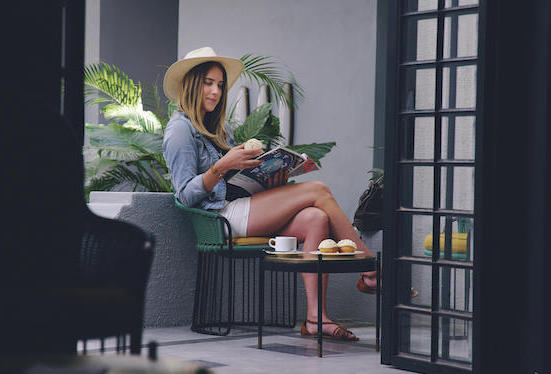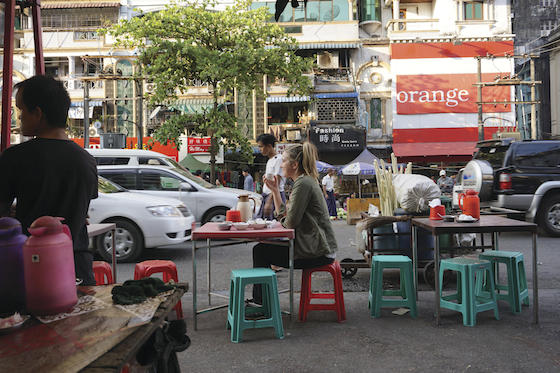When The Everly, a Kimpton Hotel, opened in Hollywood, California, in early August, the hotel used a thoroughly modern way to get the word out — it invited local “micro-influencers” to visit. These social media mavens, most with a small following in the design, art or culinary worlds, stayed at the hotel and shared their experiences with followers.
“We wanted local people to help build the buzz in our hometown and get in front of people who would be our eventual guests, come opening,” says Meredith Strodel, senior account supervisor for C&R Communications, which oversees The Everly’s social media campaigns.

Using micro-influencers – those with 7,000 to 20,000 followers but with a
hyper-engaged audience – is one way hotels are getting smarter about hosting famous-on-the-internet people in exchange for exposure, whether it’s with a large, targeted campaign run by a media agency or with selected posts arranged by the general manager or publicist. According to Mediakix, an influencer marketing agency, this visual, personal form of marketing is expected to grow into a US$5 billion to US$10 billion business in just five years.
Measuring influence
There are challenges, though: many social media platforms, thousands of influencers and no clear way to measure impact. (Oh, and in the U.S., the Federal Trade Commission has gotten involved, making sure free stays are properly disclosed.)
Evan Asano, founder and CEO of Mediakix, which recently spearheaded a global social media campaign for Fairmont Hotels & Resorts, advises hotels to look at their core marketing goals and match an influencer to the overall sales and marketing plan.
“Knowing and understanding your brand and making sure the influencer can best represent that, and can reach your target demographic, is important,” he says.
Engagement also is critical, especially since followers and likes can be bought. “It’s better to work with smaller influencers who have higher engagement than really big influencers just because it’s a big name,” he says.
Mediakix recently did an experiment where they created two fake Instagram accounts and bought followers. It wasn’t long before the accounts received offers from brands to post sponsored content on their behalf.
Stuart Foster, vice president of global marketing for Hilton Hotels’ Curio Collection, says the brand chose influencers with strong engagement for its #CitiesbyCurio campaign, but other factors included how they share their stories and engage with their audience, and whether their photos matched Curio’s brand presence. “Finding influencers who can share compelling original video and photography is key,” he says.

What to post
What, where and when should an influencer post? Krista Simmons, a Los Angeles-based travel writer and digital media producer, says hotels should be specific about what they want the influencer to post, particularly if the influencer is known more for fashion or lifestyle content than travel.
“Dictating exactly what someone has to shoot isn’t advisable,” she says. “However, it would be helpful to say what features of the property need to be shown.”
Asano says hotels can better control deliverables with a paid media trip versus a room barter. “If all the influencer is doing is three Instagram posts and they tag the hotel, I don’t think there’s much value there,” he says. A paid media trip gives the hotel a better chance to dictate content, timing and offers, with the influencer retaining creative control.
Hotels also can ask the influencer for deliverables that don’t make it onto social media. The Four Seasons Resort in Seychelles last year invited travel Instagrammer @pilotmadeleine, who has over 700,000 followers, to stay at the resort. Each of her posts gained over 15,000 likes, and the resort got rights to use photos from her stay on its own social media and marketing channels.
One hotel has gone so far as to invite influencers to help design the space. The Trafalgar St. James Hotel in London will reopen this month after a multimillion-pound renovation overseen by a “peer panel” of young influencers from the city’s art, design, fashion and lifestyle worlds. Each offered up their ideas of what Londoners and visitors want to experience at the hotel, from bars and furnishings to services. No doubt, these influencers will post regularly from “their” hotel.
Tracking ROI
How much influence do influencers have? Measuring the increase in followers and tabulating likes are ways to track a campaign. Using promo codes for booking or creating custom booking links can show a direct effect on bookings. But it’s not exact.
Strodel of C&R Communications looks at it as another way to reach specific consumers. “If it’s not displacing revenue and it’s reaching your target demographic, then it’s more exposure for your brand,” she says.
Simmons sees influencer marketing as similar to advertising, where the content is more about familiarization.
“It’s not going to make you go and buy something right away,” she says. “But it seeps into your subconscious so you make travel buying decisions without realizing why you made it.”
Hotels can’t simply expect a huge ROI from one trip with an influencer, Asano says.
“Hospitality is different because it’s not a US$50 shirt with free shipping. It’s a decision about a vacation that people might book six months later,” he says.
Contributed by Juliana Shallcross
